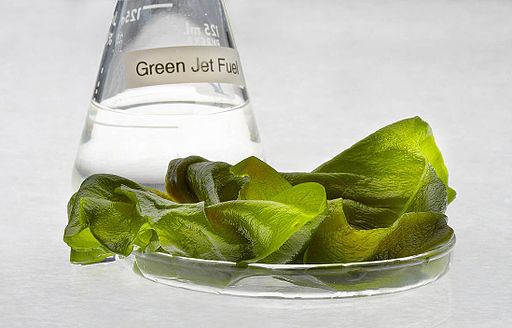Fuels from Algae or Waste
Fermentation, Liquefaction, and Biohydrogen Production
Organic waste
Organic (wet) wastes cannot easily be used in thermochemical convertion processes with subsequent Fischer-Tropsch synthesis like described in the previous chapter (2.3). Reasons are high water contents, low heating values, pollutants, high salt, ash and heavy metal concentrations. These properties are causing problems like slagging, incomplete conversion and complications with ash removal. Therefore, usually organic wastes are converted in gasous fuels (e.g. bio-methane) via anaerobic treatment. Bio-methane can then also be liquefied (liquefied gas). A further promissing option for fuel production from wet organic waste is hydrothermal liquefaction.
Algal biomass
After extraction and concentration of the respective raw materials from the algae biomass they can be processed like described in the previous chapters. The following processing routs are possible.
For biogas
production, macroalgae are typically used because, unlike microalgae, they
do not accumulate significant amounts of lipids (including fats and oils).
However, they do accumulate considerable amounts of carbohydrates like glucose
or galactose, which can be used for biogas production or converted into bioethanol
or biobutanol through hydrolysis followed by fermentation.
Microalgae,
on the other hand, are more suitable for biodiesel production due to
their ability to accumulate lipids. For example, fatty acid methyl esters
(FAME) biodiesel or renewable hydrocarbon-based diesel can be derived from
extracted algal lipids (see the previous lesson on biodiesel).

Fuel from algae by Honeywell (CC BY-SA)